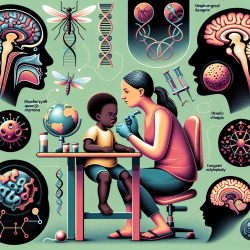Introduction
In the world of speech-language pathology, creating optimal learning environments for children is paramount. While the field may seem far removed from experimental physics, insights from research on Active Magnetic Shields (AMS) can provide valuable lessons for improving therapy outcomes. This blog explores how the principles of AMS can be applied to enhance online therapy services, like those offered by TinyEYE, by focusing on data-driven decisions and environmental stability.
Understanding Active Magnetic Shields
The recent study titled A large ‘Active Magnetic Shield’ for a high-precision experiment provides an in-depth look at how AMS systems create stable magnetic environments. These systems are designed to maintain uniform magnetic fields, crucial for experiments sensitive to magnetic fluctuations. By employing feedback-controlled coils, AMS can stabilize magnetic fields, which is essential for high-precision measurements.
Application in Speech Therapy
While AMS is a concept rooted in physics, its core principles can be translated into the field of speech therapy, particularly in online settings. Here’s how:
- Environmental Stability: Just as AMS stabilizes magnetic fields, creating a stable and distraction-free environment is crucial for effective online therapy sessions. This can be achieved by minimizing background noise and ensuring a consistent internet connection.
- Feedback Mechanisms: AMS relies on feedback loops to adjust magnetic fields. Similarly, therapists can use real-time feedback from children during sessions to adapt their approaches, ensuring that therapy is responsive to the child’s needs.
- Data-Driven Adjustments: The AMS study emphasizes the importance of data in maintaining field stability. In speech therapy, collecting data on a child’s progress can guide therapists in tailoring sessions to maximize outcomes.
Encouraging Further Research
The AMS study underscores the value of continuous research and innovation. For speech therapists, staying informed about the latest research in both speech-language pathology and related fields can open new avenues for enhancing therapy practices. Encouraging practitioners to engage with interdisciplinary research can lead to innovative solutions that improve therapy outcomes.
Conclusion
By drawing parallels between Active Magnetic Shields and online speech therapy, practitioners can gain insights into creating more effective therapy environments. Emphasizing stability, feedback, and data-driven decisions can lead to better outcomes for children. As we continue to explore these connections, the potential for innovation in therapy practices is vast.
To read the original research paper, please follow this link: A large ‘Active Magnetic Shield’ for a high-precision experiment.










